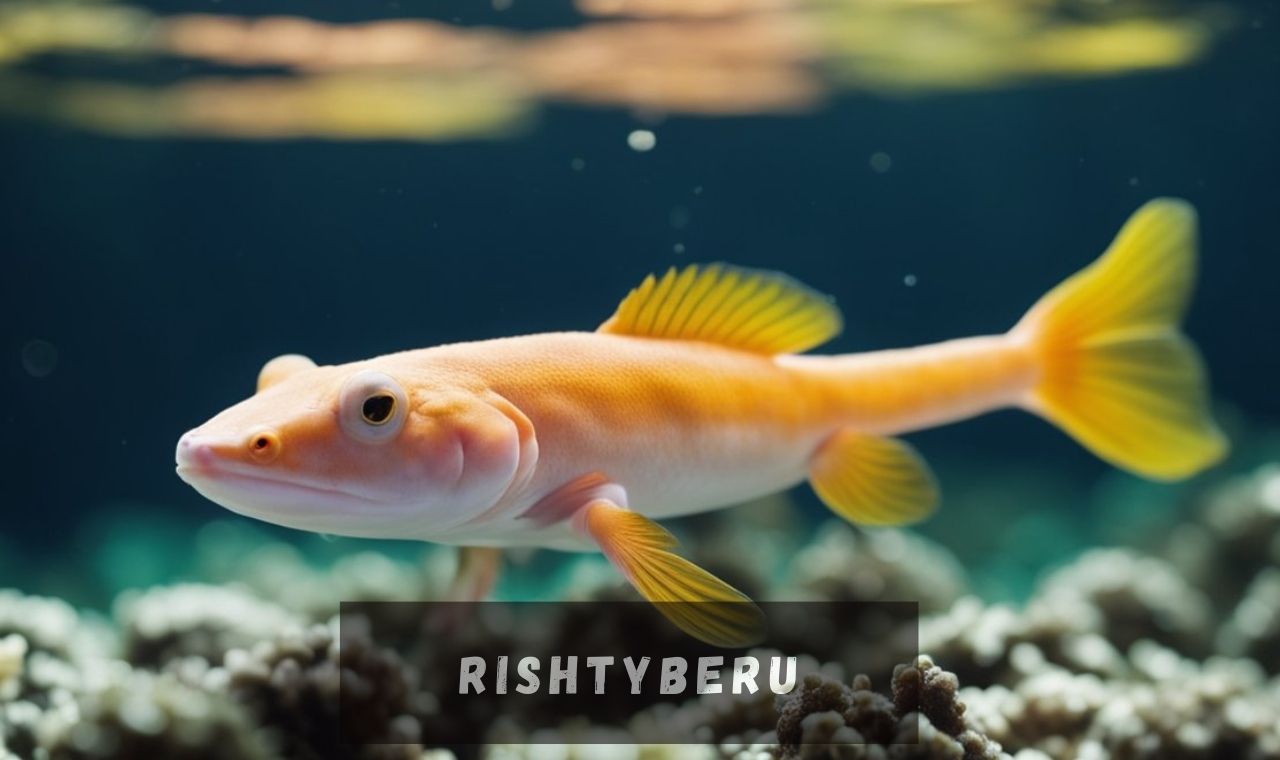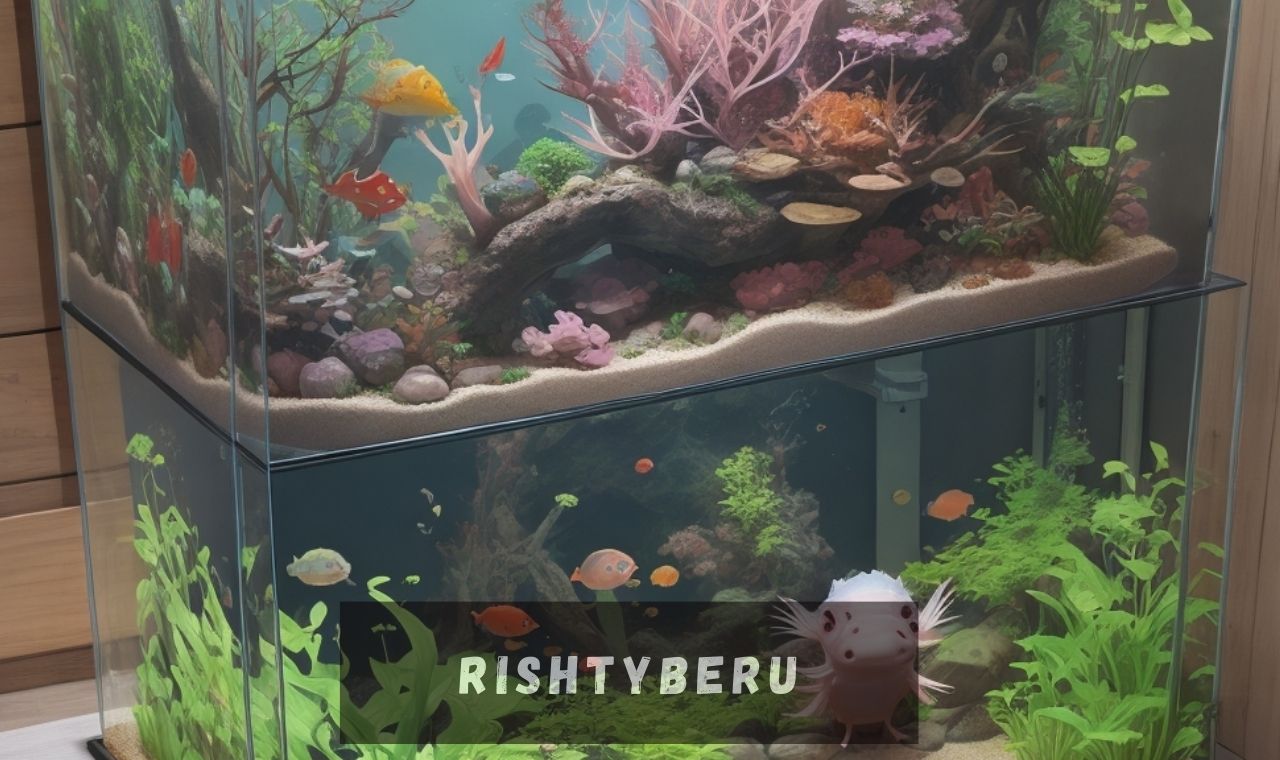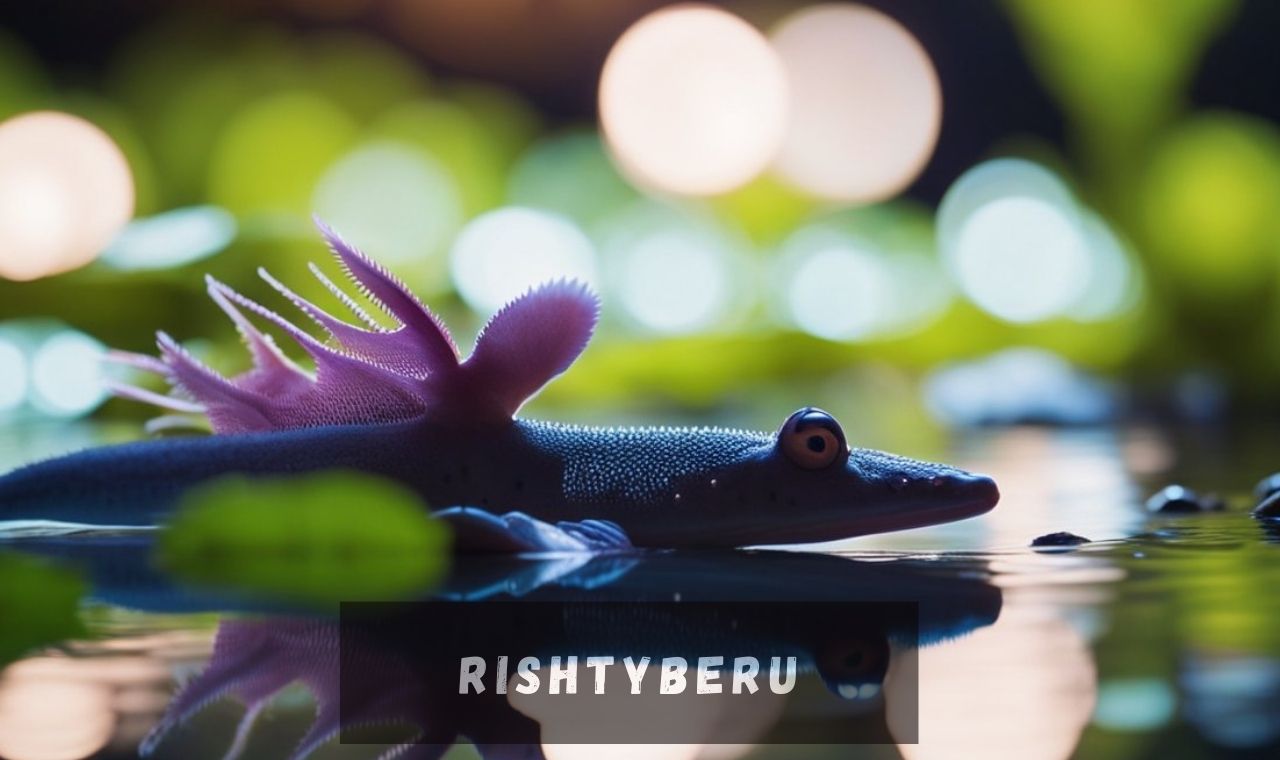When you first lay eyes on the captivating creature known as the axolotl, you’re likely to ponder: Are axolotls classified as fish or amphibians? This preliminary discourse aims to shed light on this common query by amalgamating captivating axolotl insights with scientific elucidations.
In addition to unraveling the mysteries of these fascinating beings’ biological categorization, we will embark on an exploration of an axolotl’s care regimen. This compendium of knowledge will not only illuminate the essence of axolotls but also provide crucial insights into their distinctive needs and requisites. Such understanding will prove indispensable for those intrigued by the prospect of nurturing these extraordinary creatures as companions.
Decoding the Puzzle: Taxonomic Analysis of Axolotls
In our endeavor to grasp the axolotl’s position within the realm of biodiversity, let’s delve into their scientific classification. This journey will encompass an examination of their taxonomy, their hierarchical position within the animal kingdom, and their niche within the Urodela order.
Axolotl Taxonomy and Scientific Dissection
Residing within the kingdom ‘Animalia’, phylum ‘Chordata’, and class ‘Amphibia’, axolotls are quintessential aquatic amphibians. They are situated within the order ‘Urodela’, family ‘Ambystomatidae’, genus ‘Ambystoma’, and bear the scientific species epithet ‘Ambystoma mexicanum’.
This taxonomic assignment aligns them with fellow amphibians such as salamanders and newts, sharing akin physical traits with these counterparts.
Deciphering Urodela: Axolotls’ Place in the Order
The order Urodela predominantly encompasses salamanders and newts, distinguished by elongated tails and four equally proportioned limbs. Aptly christened as ‘tail-amphibians’, this order showcases an array of distinctive attributes setting them apart from other aquatic and amphibious denizens. Among these, axolotls exhibit a myriad of intriguing characteristics unique to their species.
| Characteristic | Explanation |
|---|---|
| External Gills | Unlike most amphibians, axolotls retain their larval features into adulthood, including their distinctive external gills. |
| Neoteny | This is the process of reaching maturity without undergoing metamorphosis, a trait that is unique to certain amphibians, and is exhibited exceptionally by the axolotl. |
| Regeneration | Axolotls possess the remarkable ability to regenerate entire parts of their bodies, including their spinal cord, heart, and limbs. |
Exploring the classification of axolotls opens up new perspectives, enriching our admiration for these extraordinary aquatic amphibians. As we delve deeper into our exploration, we’ll closely examine their unique biological features and their adeptness in navigating their underwater habitats.
Distinctive Traits of Axolotls

Axolotls, intriguing denizens of aquatic realms, boast a distinctive profile set apart by a myriad of unique traits. At first glance, their physical features may bewilder, but under scrutiny alongside common fish and other amphibians, their mystique unfurls. Let us embark on a deeper examination of the tangible characteristics that render axolotls a captivating subject within the realm of marine biology.
Deciphering Axolotl Physicality
Derived from the ancient Aztec term meaning “water monster,” axolotls proudly exhibit their singularity. Key among their traits are the feathery external gills, a rarity among amphibians. These gilled creatures retain juvenile features, including a dorsal fin stretching from their head to their elongated tail, facilitating agile swimming. Their well-formed limbs, each adorned with tiny digits, add to their allure. Notably, their vibrant palette ranges from dark wild types to exotic albino and leucistic variants, drawing considerable attention.
Contrasting Axolotl Traits with Common Fish and Amphibians
Superficially, an observer might liken axolotls to fish due to their aquatic habitat and shared physical traits. However, a meticulous comparison reveals stark anatomical disparities.
| Features | Axolotls | Common Fish | Other Amphibians |
|---|---|---|---|
| Gills | External, feathery | Internal, covered by operculum | Internal or non-existent in adults |
| Limb Structure | Four limbs with digits | No limbs, fins instead | Usually four limbs; varies |
| Tail | Long and equipped with a dorsal fin | Varies; generally used for propulsion | Non-existent in most adult amphibians |
The Unique Identity of Axolotls: Amphibians in Aquatic Disguise
The inquiry into whether axolotls belong to the realm of fish or amphibians necessitates a thorough exploration of biological classification, dispelling prevalent misconceptions. Despite their strikingly fish-like lifestyle, axolotls are unequivocally classified as amphibians, specifically falling under the order of Urodela.
What often confounds observers are the fish-like traits exhibited by axolotls, including the absence of developed lungs and the presence of external gills. These distinctive attributes, while cementing their aquatic affinity, align them with a subset of amphibians termed neotenic amphibians. This category comprises species that maintain juvenile characteristics into adulthood, bypassing complete metamorphosis for a fully terrestrial existence.
Illustratively, several key axolotl features affirm their amphibian identity:
- Axolotls possess limbs, a hallmark trait of amphibians.
- Their three-chambered hearts, akin to other amphibians, differ from the two-chambered hearts found in fish.
- Their skin’s permeability to water is a hallmark exclusive to amphibians.
- The remarkable ability to regenerate lost body parts, a trait shared by few amphibians, is rarely observed in fish.
Despite their profound aquatic adaptations, axolotls unequivocally originate as amphibians. Their lifecycle commences with eggs laid in water, which hatch into aquatic larvae bearing gills. Unlike most amphibians, which transition to terrestrial life post-metamorphosis, axolotls forego this stage, retaining their aquatic adaptations and residing underwater throughout their lives. This adaptation is facilitated by their capacity to attain sexual maturity in larval form, a phenomenon known as neoteny.
In essence, axolotls epitomize amphibians intricately tailored to an aquatic existence, challenging the conventional progression from amphibious to terrestrial life. They stand as a testament to evolutionary marvels, showcasing the adaptability and diversity inherent in the animal kingdom.
Navigating the Aquatic Realms: Axolotl’s Distinct Habitat and Adaptations
Axolotls, captivating aquatic amphibians renowned for their unique morphology and lifestyle, thrive in their exclusive underwater domain. This segment elucidates the distinctive features of their habitat and how these creatures have evolved to flourish within it.
Distinguishing Axolotl’s Habitat from Typical Fish Environments
The aquatic abode of axolotls, while bearing semblances to conventional fish habitats, reveals striking disparities upon closer examination. Naturally dwelling in the ancient Xochimilco lake system near Mexico City, axolotls inhabit a landscape characterized by sluggish waters, canals, and marshy expanses—a stark departure from the swift currents of rivers or the abyssal depths of the ocean, where many fish species thrive.
Rooted in their origins as cave-dwelling denizens, axolotls exhibit a preference for low-light or dim conditions, reminiscent of their ancestral subterranean haunts. To replicate this environment, caretakers often tailor tanks with features such as foliage, rocks, and hiding spots.
Adaptations to Aquatic Life: Axolotl’s Gill and Respiratory System
Within the dynamic aquatic realm, axolotls showcase remarkable evolutionary adaptations, particularly concerning their gills and respiratory mechanisms. Unlike conventional amphibians, axolotls retain their juvenile form, sporting external feathery gills throughout their lives—a phenomenon known as neoteny.
(Note: Neoteny, a biological concept wherein an organism retains juvenile traits into adulthood, finds a perfect exemplification in axolotls.)
| Axolotls | Typical Amphibians | Fish |
|---|---|---|
| External gills | Internal lungs and skin respiration | Gills covered by operculum (gill cover) |
| Filter feed | Tongue and mouth for capturing and swallowing food | Various feeding mechanisms – filter feed, gulp food, or snag prey |
| Slow movement | More agile and quick, on land or water | Diverse locomotion methods, generally better swimmers |
Axolotls stand apart from conventional amphibians and fish, thanks to their remarkable traits. Their retention of larval form and exclusive aquatic lifestyle render them truly unique. These adaptations not only enable them to flourish in water environments but also infuse them with distinctive personalities and behaviors, making them captivating subjects for observation and nurturing.
Crafting an Optimal Environment for Axolotls: A Comprehensive Guide
The cornerstone of axolotl care lies in establishing an environment that fosters their health and contentment. This guide encompasses pivotal elements, ranging from configuring an ideal habitat to preserving pristine water conditions and addressing prevalent health issues, ensuring your axolotls lead thriving and fulfilling lives.
Creating the Perfect Axolotl Habitat
When setting up an axolotl tank, factors such as size and habitat features are of paramount importance. Emulating their native surroundings in Mexico City’s lakes and canals, an optimal tank should offer ample space, with a minimum capacity of 20 gallons for a single adult axolotl, supplemented by an additional 10 gallons per additional axolotl. To prevent potential ingestion hazards, maintain a bare tank bottom or employ large/medium-sized stones. Incorporating low-flow filters and stable hiding spots furnishes a secure and familiar refuge for your aquatic companions.
Ensuring Water Quality and Temperature Stability
Given their aquatic nature, axolotls’ habitat requirements primarily revolve around water parameters. Axolotls thrive in cooler temperatures ranging from 60 to 64 degrees Fahrenheit. It’s imperative to keep ammonia, nitrite, and nitrate levels minimal, as elevated concentrations can jeopardize your pet’s well-being. Regular water changes, typically ranging from 10% to 20% weekly, are instrumental in upholding water clarity and optimizing living conditions for your axolotls.
Addressing Common Health Issues in Axolotls
A comprehensive axolotl care guide necessitates an understanding of prevalent health concerns. Among these, fungal infections, characterized by white or grey fuzz on the body, and impaction, resulting from digestive tract blockages often caused by ingesting gravel or substrate, are noteworthy. Treating fungal infections often entails salt baths or fungicidal treatments, while prevention hinges on maintaining optimal water conditions. In cases of impaction, seeking veterinary assistance is advisable. To mitigate impaction risks, steer clear of small gravel or sand substrates, opting instead for a bare tank bottom.
| Constraint | Requirement |
|---|---|
| Tank Size | Minimum of 20 gallons for single axolotl, extra 10 gallons for each additional |
| Water Temperature | 60 to 64 degrees Fahrenheit |
| Water Quality | Low Ammonia, Nitrite, Nitrate levels |
| Common Health Concerns | Fungal infections, Impaction |
| Preventive Measures | Regular Water changes & Optimal tank conditions |
Ensuring that your pet axolotl thrives in its habitat and stays healthy involves meeting specific requirements and addressing common health issues. Having a good grasp of these factors is essential for providing proper care for these unique amphibians.
Understanding what axolotls eat sheds light on their dietary needs, which largely align with their carnivorous nature. In their natural habitat, axolotls consume a variety of small crustaceans, worms, and other aquatic creatures.
In captivity, axolotls maintain their carnivorous tendencies, although their diet may vary slightly. Owners should aim to offer a well-rounded diet primarily consisting of protein-rich foods. Some suitable options include:
| Food Type | Wild Diet | Captive Diet |
|---|---|---|
| Earthworms | ✓ | Occasional |
| Small Fish | ✓ | Rarely |
| Small Crustaceans | ✓ | Occasional |
| Insects and their larvae | ✓ | Rarely |
| Axolotl Pellets | ✗ | ✓ |
| Bloodworms | ✗ | ✓ |
| Daphnia | ✗ | ✓ |
| Brine Shrimp | ✗ | ✓ |
Exploring the culinary needs of axolotls greatly enhances their overall well-being. Tailoring their diet to meet specific nutritional requirements ensures they thrive, whether dwelling in the wild or under human care.
The Intriguing World of Axolotl Reproduction
Delving into the captivating realm of axolotls sheds light on their distinctive reproductive behaviors, setting them apart from their amphibian counterparts. Unlike most amphibians, axolotls eschew metamorphosis, retaining their youthful appearance indefinitely. This unique life cycle intertwines seamlessly with their breeding habits, offering a glimpse into the extraordinary existence of these aquatic marvels, whether in their natural habitat or in captivity.
Decoding the Axolotl’s Peculiar Breeding Cycle
The breeding journey of axolotls commences at 18 months of age, characterized by courtship rituals where the male gently woos the female. Upon her acquiescence, the male deposits a ‘spermatophore,’ ensuring internal fertilization of the female’s eggs. Remarkably, a healthy female axolotl can lay an impressive 600 to 700 eggs in a single breeding season!
Nurturing Axolotl Offspring: From Eggs to Juveniles
Caring for axolotl eggs demands precision and care. Typically affixed to aquatic vegetation or substrates, these eggs necessitate a delicate touch. In captivity, relocating them to a separate tank with pristine, dechlorinated water mitigates risks of predation or contamination. Hatching within 2 to 3 weeks, the juveniles swiftly morph into miniature replicas of their adult selves, displaying an early penchant for hunting. Yet, until they reach approximately 4 inches in length, cannibalism remains a risk, underscoring the importance of individual enclosures to ensure their safety.
In the broader context, understanding the physiological intricacies and breeding behaviors of axolotls offers profound insights into our planet’s rich biodiversity. Providing optimal care during their reproductive phases demands a nuanced comprehension of their natural instincts, safeguarding the perpetuity of this remarkable species.
Crafting the Ultimate Axolotl Haven: A Guide to Habitat Design
Creating an ideal abode for axolotls demands meticulous attention to detail. The size and layout of their aquatic domain significantly influence their welfare, while mimicking natural environments fosters vitality and longevity. Strategic habitat design plays a pivotal role in enhancing the lives of these unique creatures.
The Imperative of Adequate Tank Size and Equipment
A well-proportioned tank, equipped with essential amenities, guarantees ample space for axolotls to flourish. As denizens of freshwater lakes, these creatures thrive in expansive swimming areas. Experts typically recommend a 20-gallon tank for a single axolotl, supplemented with a secure lid to prevent escape. Maintaining water temperature between 60 and 64 degrees Fahrenheit is essential for their optimal health.
Creating a Safe and Naturalistic Habitat
Emulating the axolotl’s natural habitat enriches their environment, promoting physical and psychological well-being. Incorporating flora, rocks, and hiding spots provides enrichment and security. However, all materials must be axolotl-safe, devoid of hazards that could jeopardize their health or safety.
| Essential Element | Description |
|---|---|
| Properly Sized Tank | At least a 20-gallon tank for a single axolotl, with larger tanks for additional ones. |
| Temperature Control | Temperature should be kept between 60 and 64 degrees Fahrenheit. |
| Naturalistic Design | The habitat should include axolotl-safe plants, rocks, and hiding spots to mimic their natural environment. |
Embarking on a fascinating journey into the realm of Axolotls, we unravel their true biological identity as aquatic amphibians, dispelling prevalent misconceptions that often categorize them erroneously as fish. The captivating traits of axolotls, from their delicate feathery gills to their intricately structured limbs and adaptable tails, collectively affirm their status as extraordinary members of the amphibian lineage.
A Holistic Guide to Axolotl Care
Delving into a comprehensive axolotl care regimen, our exploration underscores the paramount importance of providing suitable housing, nutrition, healthcare, and breeding strategies. Individuals dedicated to nurturing axolotls must recognize the critical significance of well-equipped and spacious tanks, mirroring their natural habitat. This approach not only ensures the overall health and longevity of axolotls but also substantially enhances their quality of life.
Insights into Breeding and Dietary Preferences
Further discourse on the unique breeding behaviors and dietary inclinations of axolotls highlights the imperative need for knowledge and comprehension in implementing effective care routines. Insights into their habitat requisites and the meticulous arrangement of axolotl tanks underscore the dedication requisite for sustaining these captivating creatures.
Concluding Remarks: Axolotls as Enriching Companions
In conclusion, the intricate qualities and distinctive characteristics of axolotls not only make them captivating subjects for study but also endow them with the potential to become cherished pets for those seeking enriching and educational experiences. With appropriate care and a nurturing environment, axolotls undoubtedly emerge as phenomenal additions to any aquatic enthusiast’s collection.



